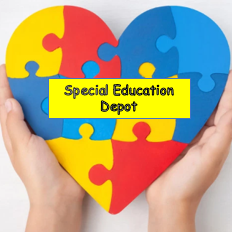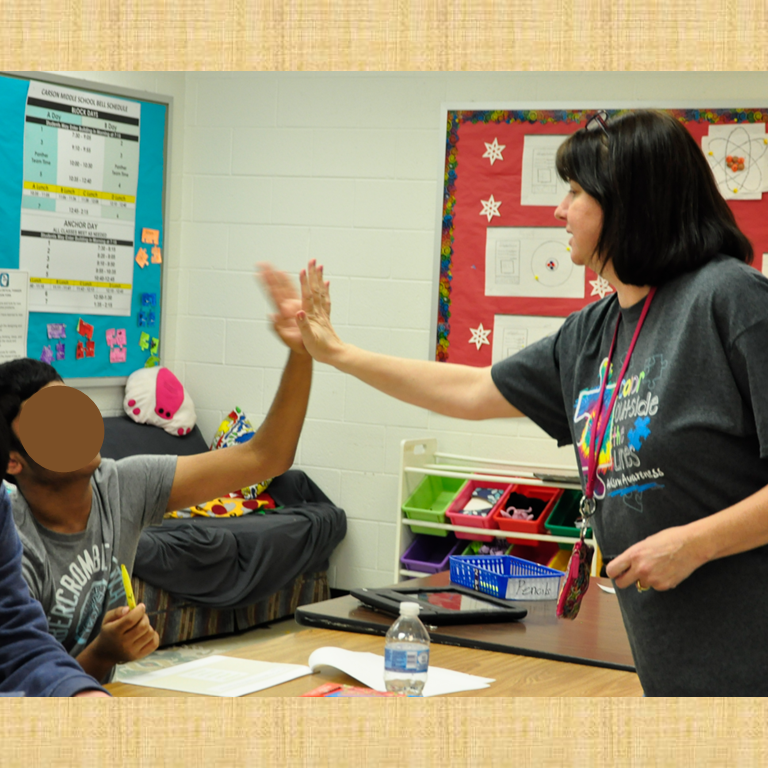
Hello Amazing teachers! In my last post I shared the three things that you need to teach in your self-contained special education classroom: IEP goals, evidence-based programs, and the standards of learning. In that post, we focused on evidence-based programs. This post will look at the standards of learning.
How Standards of Learning (SOLs) work
The standards of learning are the specific items that your state mandates students learn in school. Depending on the state that you work in, these have different names. For instance, in Virginia, there are the Standards of Learning (SOL’s) for student accessing the general education setting and the Virginia Essential Standards of Learning (VESOLs) for those students what are only accessing the special education setting. These students are usually in some kind of self-contained program. With these standards a student takes either the Virginia SOL assessment, or the VAAP assessment.
In Michigan there are the Standards, for which student take the MEAP assessment, and the Alternate Expectations (aka Essential Elements), for which students take the MI-ACCESS. Every state has a system set up something like this. Moving forward in this post, and for the sake of continuity since every state assessment and alternate assessment has a different name, I will refer to these and the general education assessment and the adapted assessment.
State adapted standards are modified general standards
For instance, using Virginia as an example, here is a standard (SOL) with its adaptations (VESOL):
Standards of Learning (general education assessment):
8.4- The student will apply knowledge of word origins, and figurative language to extend vocabulary development within authentic texts.
b)- Use context, structure, and connotations to determine meaning and differentiate among multiple meanings of words and phrases.
Essentialized Standard of Learning (adapted assessment):
R 8.1- The student will: Understand the meaning of words in passages that are read to the student or that the student reads.
Complexity Continuum: The words could be shown with or without a graphic representation or could appear in a sentence.
Both standards deal in vocabulary development.
Why is this important?
I bring up all this technical rigamarole because in your moderate to severe Autism and intellectual disabilities classroom you are going to be responsible for teaching both sets of standards. I can tell you that in 4 of my 5 English classes, I have students who are non-verbal who are accessing the general education standards and those who can have a conversation with me but who are accessing the adapted standards.
Prepare your answers now.

And you will absolutely be asked at some point how you are able to teach to both sets of standards at the same time in the same room with two different levels of students. This question will probably be asked by a parent of a student with Autism, who believes that their child is much higher than the rest of the students in the class. And, the fact is, that student may actually be academically higher than the other students, but their interfering behaviors are keeping them from accessing the content.
It is a fine line that you are walking, my friend. It will take some time and practice, but it will benefit you to be able to speak about how the standards are similar, and what you are doing in your class to meet everyone’s needs.
Here is an easy strategy on how to do this.
Every school has a back-to-school night, or open house, or something like that at the beginning of the year. Each year I pick a standard. I go through the general education requirements and the adapted requirements and see what matches. (If you can’t find a lot of similarities, choose a different standard to use as your example.) Then I write the very basic elements of those two standards on a presentation slide. This year my slide literally said:
Main Idea
Details
Vocabulary
Figurative Language*
As I was going through my presentation, I hit this slide and said something like:
“We get a lot of questions on how we can teach to so many levels and standards at one time, so I wanted to show our parents how we do this. We use the general education pacing guides and standards and match them to the adapted pacing guide and standards.
“For instance, the adapted pacing guide tells me that I need to teach main idea, details, and vocabulary during the first quarter. The general education pacing guide tells me that I need to teach main idea, details, vocabulary, and figurative language during the first quarter. The only difference is figurative language.
“So, I teach the first three topics to everyone at their own level. Then, while I am teaching figurative language, I also make sure to include texts that are written at a level that everyone can access, as well as more difficult texts for my kids accessing the general education curriculum. That way, the higher students can get the extra practice they need with lower-level texts while my more struggling students can have exposure to higher level texts. In reality, everyone gets figurative language. It’s a win-win!”
This does two things. First, it makes you sound like you know what you are doing. And second, it lets parents know that you have enough experience to handle the academics of their child. If you say all of this with enough enthusiasm, it also shows parents that you are the teacher that they have always dreamed about for their child: professional, capable, and ready to handle every situation.
What comes next?
Using the English topics of main idea, details, vocabulary, and figurative language, how does one teach these things?
My next post goes into this and uses an instructional device that is not typically used in self- contained classrooms.
Remember to comment or e-mail me at michelle@specialeducationdepot.com with any questions. This can be a lot of information depending on your experience level. Standards of Learning are only one part of what you need to teach each day. There are also evidence-based programs and IEP goals and objectives.

I have taught in special education for 16 years and I have tons of information to share with you! Please feel free to put any questions into the comments box below or you can e-mail me at michelle@specialeducationdepot.com.
I also have an extensive Teachers Pay Teachers store: Special Education Depot. Every item there has been used with special education students in a special education classroom. I begin every lesson with a Free Primary Text Power Point that you can find here. I have students highlight the important information on a student copy as I highlight on the board. This is an activity that EVERYONE can do, regardless of ability!
Everyone have a great week! And happy teaching!
-Michelle




One thought on “How to Teach the Standards: The 3 Things You Need to Know”